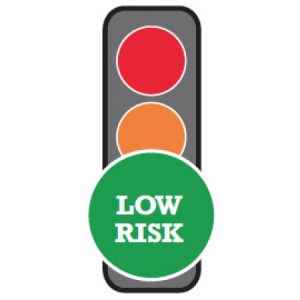 The small and mid-market business lending landscape is undergoing rapid change.
The small and mid-market business lending landscape is undergoing rapid change.
According to a 2014 report from Ernst & Young, “nearly one in five small or mid-sized business reports having changed its primary bank in the past year.”
The reason: access to capital. An increasing number of business owners feel that they can no longer rely on traditional lending channels to provide needed funds – regardless of a long-standing history with the bank or other providers.
And the feeling is mutual; not only are business owners departing from traditional lending approaches, but banks are losing interest to lending to smaller businesses, in favor of larger corporation with greater borrowing potential.
The Lack Of Responsiveness
 The lack of response from traditional lenders has opened the door for a number of alternative lenders to pick up the slack. This group includes everything from “alternative lenders”, “peer to peer lenders”, “crowd funding” and very small local banks.
The lack of response from traditional lenders has opened the door for a number of alternative lenders to pick up the slack. This group includes everything from “alternative lenders”, “peer to peer lenders”, “crowd funding” and very small local banks.
These lenders are meeting the needs of borrowers by meeting the demands for more flexible terms, faster access to capital and lower amounts of paperwork.
To be clear, not all banks offer unreasonable terms meant to deter certain business; in fact, banks tend to offer much lower rates than alternative lenders.
But, according to these alternative lenders, interest rates aren’t everything and more and more of these businesses are willing to absorb the much higher interest rates in exchange for certain other perks offered by alternative lenders.
Days … Not Months !
 One area in which alternative lenders are literally outpacing traditional banks is in how fast they can transfer funds to their customers. The top business lenders have streamlined every step of the process by shifting their platforms online.
One area in which alternative lenders are literally outpacing traditional banks is in how fast they can transfer funds to their customers. The top business lenders have streamlined every step of the process by shifting their platforms online.
Now, rather than filling out stacks of complicated forms and paperwork, customers can answer a series of simple questions about themselves, their business, and the size of the desired loan; instead of waiting months just to see if they’ve been approved for a loan, borrowers can know within hours, and receive funds within days – not months.
According to an article from Nerd Wallet, the process of applying for a bank loan for your business can be  both lengthy and complicated. “Expect to spend 25 hours or more just taking care of the necessary paperwork,” the article warns. Borrowing through an alternative lender, meanwhile, can take as little as 10 minutes.
both lengthy and complicated. “Expect to spend 25 hours or more just taking care of the necessary paperwork,” the article warns. Borrowing through an alternative lender, meanwhile, can take as little as 10 minutes.
Nerd Wallet also estimates that borrowers will have to wait anywhere from two to six months for a bank to both approve the loan and disburse the funds.
According to customer data from one alternative lender, some customers achieved pre-qualification status within an hour, and customers on average will receive funding in as little as 11 days.
Only Low-Risk Borrowers …
One of the main reasons why alternative lenders can get funds to borrowers faster is because of their less stringent applicant requirements. Since the 2008 recession, banks have upped their lending restrictions so as to only approve what they consider “low-risk” borrowers. This status applies to business owners with excellent credit, whose businesses are well established and not struggling financially.
 Alternative lenders have remedied this problem by offering lower requirements and more flexible terms, the tradeoff being they charge higher interest rates than traditional banks.
Alternative lenders have remedied this problem by offering lower requirements and more flexible terms, the tradeoff being they charge higher interest rates than traditional banks.
To receive a small business loan from a bank, you need excellent personal credit. Maintaining good credit indicates to lenders that you are a reliable borrower, that you’ll pay off your loan within the terms set by the lender.
Business Finance says a credit score of 800 will get you a loan practically everywhere; 700 is considered ideal by most banks, and most banks will not approve an application for anyone with a credit score less than 640.
On the other hand, alternative business lenders provide options to borrowers with personal credit scores as low as 550. Some will even provide working capital loans to borrowers with a score of 500.
It’s No Secret …
 It’s no secret to those in the small business realm that a significant portion of small businesses will fail within the first few years. The SBA reports that half of all businesses will fail in their first year.
It’s no secret to those in the small business realm that a significant portion of small businesses will fail within the first few years. The SBA reports that half of all businesses will fail in their first year.
One of the main contributing factors to this statistic is the fact that business owners are poor money managers; they can’t pay their bills, or they invest their capital in areas that don’t produce scalable results.
Not surprisingly, traditional banks see businesses that have been around for at least two years as good investments, and younger businesses as statistically bad investments. Not the case with alternative lenders.
The top business loan providers will offer options to businesses at nearly every stage of their development. Many of these companies provide terms to businesses as young as four months!
Another Important Metric …
 Another important metric a bank will look at before approving a loan application is how much revenue your business brings in. Simply put, the more money your business makes, the more you can borrow, and the more money the bank will be able to collect in interest.
Another important metric a bank will look at before approving a loan application is how much revenue your business brings in. Simply put, the more money your business makes, the more you can borrow, and the more money the bank will be able to collect in interest.
Alternative lenders, meanwhile, will accept applicants with limited resources; and while no company can offer a term loan to a business with anything less than $100,000 in annual revenue, they do provide merchant cash advances to companies that make at least $55,000.
Speaking of lower lending requirements, a big reason why alternative lenders are becoming a more attractive option is that few of them require collateral. Simply put, collateral is an asset the borrower promises to give the lender in the event that the borrower cannot pay back the loan.
Two Types Of Collateral …
There are two types of collateral a bank may require you to borrow against before you can qualify for a loan: personal collateral refers to an asset such as a home or car that can be transferred to the bank and sold; business collateral refers to assets directly associated with the business.
 Now, of course, the bad news. Revitalization Partners is serving as a Receiver for a company that has taken out an alternative loan. As the Receiver changed bank accounts in accordance with the court order, the lender could no longer withdraw the funds on a daily basis.
Now, of course, the bad news. Revitalization Partners is serving as a Receiver for a company that has taken out an alternative loan. As the Receiver changed bank accounts in accordance with the court order, the lender could no longer withdraw the funds on a daily basis.
In their letter to the Borrower, they stated the following: The Lender had advanced the Borrower $100,000 at a Purchased Percentage of 7%. In reading the contract, the lender receives 7% of all receivables daily until the Lender has received $143,000 in return.
Most importantly, the Borrow was also agreeing to guarantee the loan at the same time that the contract was signed. Despite the Lender being involved in the Company’s receivership, the Lender is free to pursue the Guarantor without restrictions.
These loans affect your existing credit business and purchase arrangements, your business and personal collateral, and your home itself.
One Last Thing …
There is no document that should be signed without your understanding every term presented. Before signing anything, ask an independent financial business advisor. It’s too important not to.


